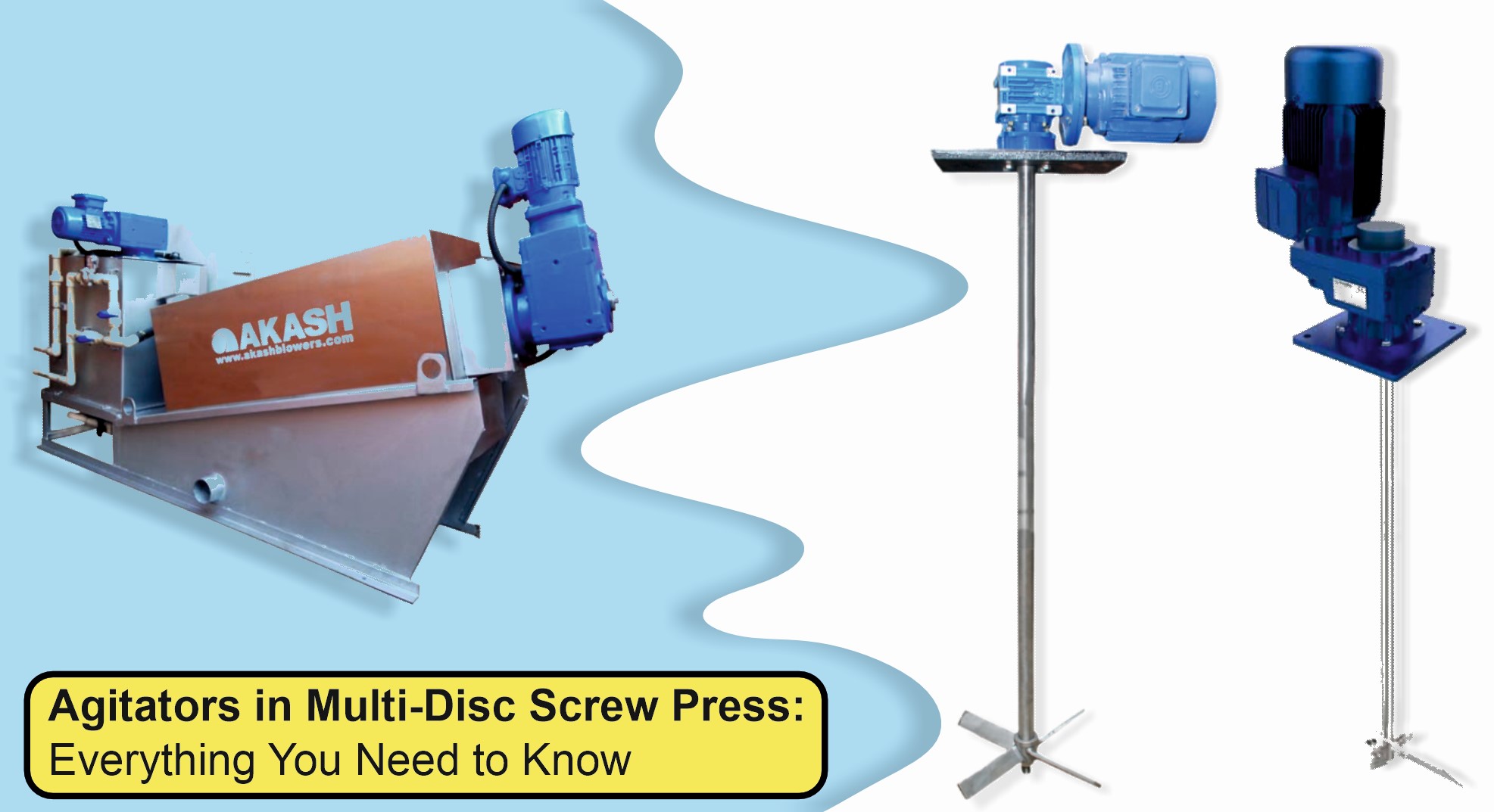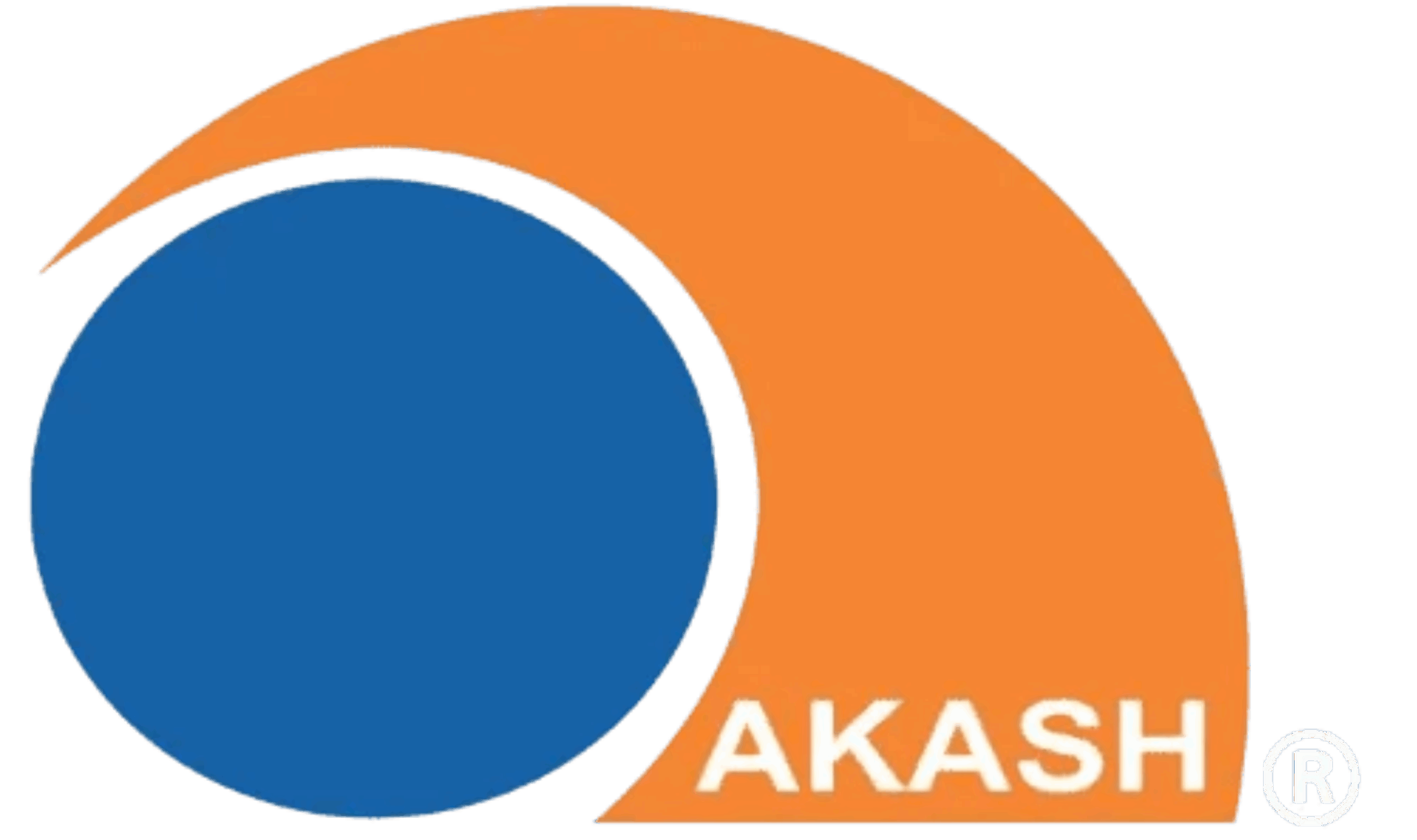Agitators in Multi-Disc Screw Press: Everything You Need to Know

Introduction
Agitators play a crucial role in various industrial applications, including sludge dewatering processes in Multi-Disc Screw Presses (MDSP). These mechanical devices help in mixing, maintaining uniformity, and preventing sedimentation of solids. In this blog, we will explore how agitators work, their types, and their significance in sludge dewatering systems.
What is an Agitator?
An agitator is a mechanical device used to stir, mix, or homogenize liquids and semi-solids. It consists of a motor, shaft, and impellers or paddles that rotate to create movement in the material. In sludge dewatering applications, agitators ensure that the sludge remains properly mixed, preventing settling and enhancing dewatering efficiency.
Importance of Agitators in Multi-Disc Screw Press
- Prevents Blockages – Keeps sludge in motion, avoiding buildup inside the system.
- Enhances Dewatering Efficiency – Ensures even particle distribution for better water separation.
- Reduces Maintenance Costs – Minimizes wear and tear by preventing sedimentation.
- Improves Chemical Mixing – Optimizes polymer usage, reducing overall costs.
- Energy Efficient – Modern agitators are designed for low power consumption while delivering high performance.
How Does an Agitator Work?
Agitators function by inducing motion in the sludge mixture, keeping solids suspended and ensuring proper chemical mixing. The working principle involves:
- Rotation of Blades or Impellers – The agitator’s impeller rotates at a controlled speed to create turbulence.
- Uniform Distribution of Solids – The motion prevents solids from settling at the bottom.
- Improved Flocculation – In cases where polymers or coagulants are added, agitators help achieve better chemical interaction.
- Avoiding Clogging – Continuous agitation minimizes the risk of clogging in the screw press system.
Types of Agitators Used in Multi-Disc Screw Press Systems
There are different types of agitators, each designed for specific applications. Common types include:
Paddle Agitators
- Consist of flat blades attached to a rotating shaft.
- Suitable for slow-speed mixing.
- Used for gentle stirring in sludge conditioning tanks.
Propeller Agitators
- Resemble boat propellers and create axial flow.
- Ideal for high-speed mixing and maintaining uniformity.
- Often used in chemical mixing tanks.
Turbine Agitators
- Have multiple blades for high shear mixing.
- Effective for heavy sludge with high solid content.
- Helps in rapid flocculation processes.
Helical Ribbon Agitators
- Feature spiral blades that move sludge in a circular motion.
- Useful for high-viscosity sludge handling.
- Improves the overall efficiency of sludge dewatering.
Applications of Agitators in Multi-Disc Screw Press
Agitators are mainly used in various stages of the sludge dewatering process, including:
- Sludge Storage Tanks – Prevents solids from settling and keeps the sludge homogeneous before entering the screw press.
- Flocculation Tanks – Enhances the mixing of polymers and sludge, improving dewatering efficiency.
- Chemical Mixing Units – Ensures proper dispersion of coagulants, improving sludge treatment outcomes.
- Feed Tanks – Maintains uniform sludge flow to the screw press, preventing fluctuations in performance.
Factors to Consider When Choosing an Agitator
Sludge Characteristics
The type and consistency of sludge determine the appropriate agitator. Highly viscous sludge requires a more powerful agitator, while lighter sludge can be efficiently mixed with a standard paddle or propeller agitator.
Tank Size and Shape
The design of the tank where the agitator will be installed influences the choice of agitator type. Larger tanks require more powerful agitators or multiple units for uniform mixing.
Mixing Speed
Different applications require different mixing speeds. Slow-speed agitators are used for gentle mixing, while high-speed agitators are needed for rapid chemical dispersion.
Energy Efficiency
Energy consumption is a crucial factor in industrial applications. Selecting an energy-efficient agitator can significantly reduce operational costs.
Maintenance Requirements
Some agitators require frequent maintenance due to wear and tear. Choosing an agitator with a robust design and high durability can minimize downtime and maintenance expenses.
Installation and Maintenance of Agitators
Installation Process
- Determine the Correct Position – Proper placement ensures optimal mixing and prevents dead zones.
- Secure the Agitator Firmly – A stable mounting prevents excessive vibrations and mechanical failures.
- Ensure Proper Alignment – Misalignment can lead to inefficient mixing and potential damage.
- Check Electrical Connections – Proper wiring and motor specifications must be adhered to for safe operation.
Maintenance Best Practices
- Regular Inspection – Periodic checks for wear and damage can prevent unexpected failures.
- Lubrication of Moving Parts – Reduces friction and prolongs the life of the agitator.
- Cleaning and Flushing – Prevents residue buildup that could affect performance.
- Monitoring Performance – Any unusual noise or vibration should be investigated promptly to prevent major issues.
Future Trends in Agitator Technology
With advancements in industrial automation, agitator technology is evolving to improve efficiency and reduce energy consumption. Some emerging trends include:
- Automated Control Systems – Smart agitators equipped with sensors for real-time monitoring and adjustments.
- Energy-Efficient Motors – High-efficiency motors that consume less power while maintaining high performance.
- Advanced Material Coatings – Wear-resistant coatings that extend the life of agitator blades and reduce maintenance.
- Hybrid Agitation Systems – Combining different agitator types to achieve optimal results in complex sludge treatment processes.
Conclusion
Agitators play a vital role in Multi-Disc Screw Press systems by ensuring proper sludge conditioning, preventing clogging, and enhancing dewatering efficiency. Choosing the right type of agitator depends on sludge characteristics, processing requirements, and desired efficiency levels. By integrating an effective agitation system, industries can improve their sludge treatment process while reducing operational costs.
Investing in a high-quality agitator can significantly enhance the performance of sludge dewatering operations, leading to better water recovery, reduced environmental impact, and improved overall efficiency in wastewater treatment plants.
Also Read: What is a Multi-Disc Screw Press and How Does It Work?
Join our WhatsApp Channel to know more updates about products

